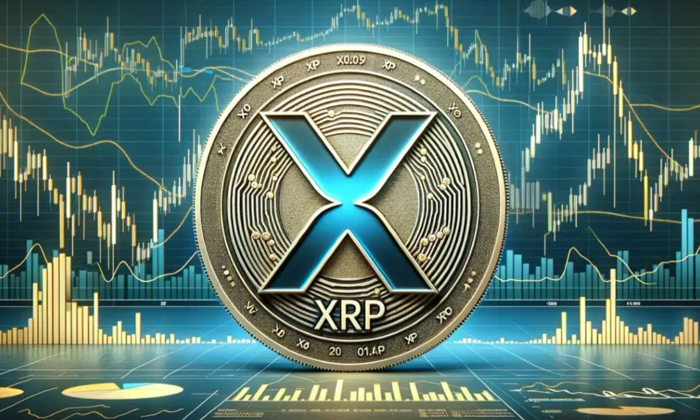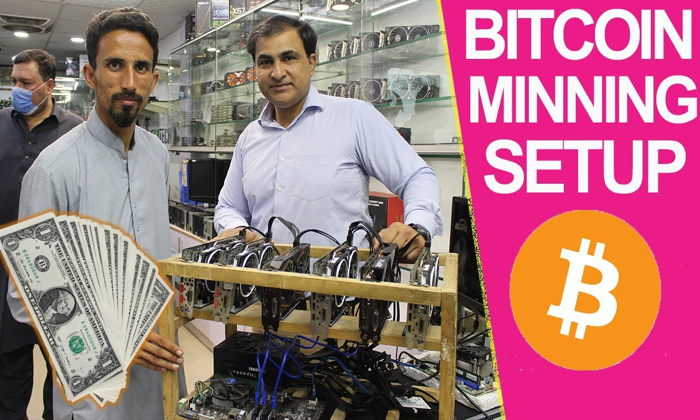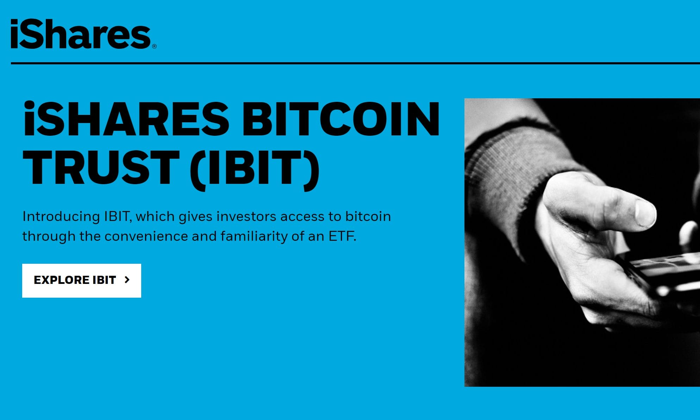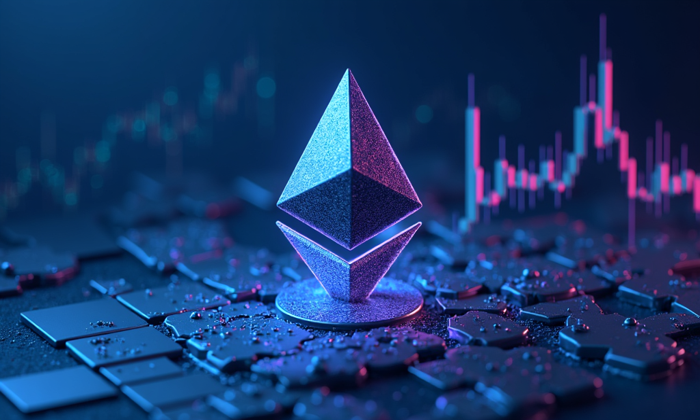XRP futures have made a striking debut on Coinbase, marking a significant development for Ripple and its ecosystem. On April 21, 2025, Coinbase launched XRP futures contracts, offering traders an innovative way to engage with the cryptocurrency without needing to hold it directly. These futures contracts, approved by the Commodity Futures Trading Commission (CFTC), come in two formats: standard contracts for institutional investors and nano contracts designed for retail traders. This launch not only positions XRP alongside major cryptocurrencies like Bitcoin and Ethereum but also signals an increasing institutional interest in digital assets. Coupled with the integration of Ripple’s RLUSD stablecoin into the Aave platform, the XRP futures market is poised for growth and enhanced participation in the DeFi market.
The launch of XRP contract options represents a watershed moment for Ripple, as it delivers new opportunities for investors within the cryptocurrency landscape. As interest in future trading heats up, these contract offerings, which include both large-scale and smaller contracts, cater to diverse investors ranging from institutions to retail participants. With the recent integration of the RLUSD stablecoin into decentralized finance protocols, Ripple’s innovations are becoming more deeply embedded within crypto markets. Such developments are crucial for enhancing liquidity and fostering broader acceptance throughout the financial ecosystem. As the DeFi market continues to evolve, XRP futures could serve as a pivotal tool for speculating on price fluctuations and managing risks effectively.
Understanding XRP Futures: What Traders Need to Know
XRP futures contracts have emerged as a critical tool for traders looking to capitalize on XRP’s price movements without needing to hold the asset directly. By offering standardized contracts, cryptocurrency exchanges like Coinbase enable both institutional and retail investors to enter the futures market with greater ease and security. With two distinct types of futures contracts available—standard contracts for institutional investors and smaller nano contracts for the retail audience—the landscape is becoming more accessible and diverse.
Moreover, the regulatory framework around XRP futures contracts, regulated by the Commodity Futures Trading Commission (CFTC), instills a sense of confidence among traders concerned about compliance and market integrity. The introduction of these contracts on platforms like Coinbase signifies the maturation of the crypto space, allowing traders to hedge their positions effectively or speculate on price transitions. This development not only enhances liquidity within the market but also places XRP on par with other major cryptocurrencies, reinforcing its role as a key player in the digital asset sphere.
Ripple’s RLUSD: The Future of Stablecoins in DeFi
The integration of Ripple’s RLUSD stablecoin into Aave marks a significant leap forward for the stablecoin’s utility within the decentralized finance (DeFi) market. This partnership is poised to leverage Aave’s extensive framework and robust infrastructure, providing users with a trusted platform to supply and borrow RLUSD. With its lending and borrowing pools set at $50 million and $5 million, respectively, RLUSD is strategically positioned to enhance liquidity in the DeFi ecosystem, which is essential for sustainable growth.
Furthermore, the application of RLUSD within Aave not only boosts its exposure across multiple blockchain networks but also integrates it into a thriving DeFi community, thus augmenting its relevance in decentralized finance. Although the current utilization rate is modest, the stablecoin has shown promising growth potential, with a market cap of approximately $294 million. As more users discover RLUSD’s capabilities, its integration into Aave could result in higher demand and usage, further establishing its status in the financial landscape.
Coinbase’s XRP Futures: A New Era for Institutional Investors
The listing of XRP futures on Coinbase is a notable event for institutional investors who are increasingly looking for compliant and regulated ways to engage with the cryptocurrency market. By offering two types of contracts—standard and nano—Coinbase caters to varying levels of investment and trading strategies, making it feasible for both large players and retail investors to engage with XRP. This move reflects an evolving investment landscape where institutional adoption of digital currencies is becoming more pronounced.
With XRP now featured alongside other reputable cryptocurrencies like Bitcoin, Ethereum, and Solana, it underscores the potential for growth and acceptance within traditional financial markets. The ability to hedge and speculate on future price movements through XRP futures introduces an additional layer of complexity and opportunity for investors, aligning perfectly with current trends in the crypto derivatives space. As interest continues to surge, XRP’s role in institutional portfolios may solidify further.
The Significance of Ripple’s RLUSD Stablecoin in the Crypto Market
Ripple’s RLUSD stablecoin has rapidly attracted attention in the cryptocurrency market, particularly following its integration into Aave. By offering a stable asset underpinned by the performance of Ripple, RLUSD provides a novel approach for users seeking stability amid market volatility. This integration’s occurrence during a period marked by a $294 million market cap suggests a robust demand and confidence in the stablecoin, highlighting its potential role as a mechanism for growth in the wider digital financial landscape.
Moreover, RLUSD’s presence in Aave’s infrastructure opens up new possibilities for liquidity provision and decentralized lending. As users can now borrow against or supply RLUSD, its integration allows participants to leverage their assets strategically while maximizing returns in the DeFi market. The long-term impact of RLUSD will depend significantly on user adoption and how effectively it can compete against other established stablecoins in the sector.
Navigating the DeFi Market: XRP and Aave Integration
The DeFi market has experienced significant evolution, with projects like Aave leading the charge in decentralized lending and borrowing. XRP’s integration with Aave represents one of the substantial steps forward, facilitating a bridge between established crypto assets and innovative financial products. As users increasingly turn to decentralized platforms for liquidity and lending options, having XRP and RLUSD available within such frameworks creates a more diverse and robust ecosystem.
This integration is particularly notable given Aave’s reach across multiple blockchain networks such as Ethereum and Polygon, providing RLUSD with an expansive audience. As liquidity in the DeFi market continues to expand, projects like Ripple’s RLUSD are well-positioned to capture engagement and encourage further adoption. The incorporation of XRP futures into this dynamic signals the seamless blend of traditional finance and the burgeoning DeFi landscape.
Potential Impact of XRP Futures on Market Dynamics
XRP futures contracts are set to significantly impact market dynamics by introducing a new layer of trading strategies for investors. As traders engage in buying and selling futures contracts, they create a more fluid market environment where prices can reflect anticipated future conditions rather than just current market sentiments. This speculative nature allows for more varied and sophisticated trading strategies, empowering investors to navigate price fluctuations effectively.
Additionally, the listing of XRP futures on a platform like Coinbase is likely to enhance overall market liquidity and broaden participation in the XRP ecosystem. This could lead to increased interest from institutional investors who are looking for regulated environments to make their moves. As liquidity improves and more products become available, the overall sentiment in the market may shift towards greater acceptance and excitement around XRP, facilitating its growth potential.
The Role of Regulatory Compliance in XRP Futures Trading
The introduction of XRP futures on Coinbase, regulated by the CFTC, signifies a pivotal moment for the cryptocurrency market, as it emphasizes the importance of regulatory compliance. Regulatory frameworks are essential in providing security and assurance to traders and investors, particularly as the crypto space continues to grow and evolve. These compliant futures contracts serve as a validation of XRP’s legitimacy as a tradable asset, attracting a more risk-averse audience.
Moreover, regulation helps draw institutional investors who may have hesitated to enter the market due to concerns about compliance and safety. The existence of a regulated trading environment enhances transparency and fosters trust throughout the cryptocurrency community. As XRP futures continue to operate within this framework, it may pave the way for similar developments across other cryptocurrencies, leading to a more structured and mature market overall.
Exploring the Synergies Between XRP and Aave in the DeFi Landscape
The integration of XRP with Aave highlights the growing interplay between cryptocurrencies and decentralized finance. Aave’s lending platform is an excellent example of how traditional finance principles can be adapted within a decentralized structure, and having XRP as part of this ecosystem strengthens its position in the market. The synergy between these two entities not only enhances XRP’s visibility but also promotes greater resource utilization within the DeFi sector.
This collaboration can also attract more users who are keen to explore financial opportunities that combine the benefits of digital currencies with DeFi innovations. By making XRP available for lending and borrowing, Aave is incentivizing users to engage with the asset, thereby boosting demand and usability. As awareness and understanding of these synergies grow, it could result in a more engaged user base within both the XRP ecosystem and the broader DeFi landscape.
Market Trends: Institutional Adoption of XRP and RLUSD
The recent trends in the market indicate a rising institutional adoption of cryptocurrencies, particularly XRP and its related products like RLUSD. Financial institutions are increasingly recognizing the potential benefits of integrating digital assets into their portfolios, with futures contracts providing a viable path to leverage these opportunities. This growing interest emphasizes the need for compliant trading opportunities, aligning with the establishment of XRP futures on regulated platforms like Coinbase.
As institutions begin to embrace cryptocurrency investments, the addition of RLUSD into prominent DeFi platforms like Aave signifies a widening acceptance of stablecoins within traditional finance. This dual trend could catalyze further developments, as institutions might seek to explore additional financial products that leverage the benefits of stablecoin utility and cryptocurrency volatility. The convergence of XRP and RLUSD in mainstream financial tools creates a promising future for the ecosystem as adoption continues to rise.
Frequently Asked Questions
What are XRP futures contracts and how do they work in the crypto market?
XRP futures contracts allow traders to speculate on the price movements of XRP without needing to hold the asset directly. Introduced by Coinbase, these regulated contracts enable investors to hedge positions against market fluctuations, offering a compliant method to engage with XRP in the derivatives market.
How does Coinbase’s listing of XRP futures enhance trading opportunities?
The listing of XRP futures on Coinbase introduces two types of contracts—standard and nano—which cater to both institutional and retail traders. With benchmarks based on the MarketVector Coinbase XRP Index, this move enhances trading opportunities by providing diverse options for speculation and risk management.
What role does RLUSD stablecoin play in the DeFi market with its integration into Aave?
The RLUSD stablecoin’s integration into Aave allows for lending and borrowing within one of the largest DeFi protocols. This partnership bolsters RLUSD’s presence in the DeFi market, enabling users to trade and utilize the stablecoin across multiple blockchain networks, thereby enhancing liquidity and user engagement.
Can XRP futures be considered a reliable investment option for institutional investors?
Yes, XRP futures are designed to cater to institutional investors, with standard contracts consisting of 10,000 XRP. These contracts provide a regulated investment vehicle, allowing institutions to manage exposure to XRP effectively while participating in the derivatives market.
What impacts have XRP futures and RLUSD’s integration into Aave had on Ripple’s ecosystem?
The introduction of XRP futures and the integration of RLUSD into Aave signify significant growth for Ripple’s ecosystem by attracting both institutional interest and enhancing liquidity in the DeFi sector, driving further adoption of XRP and RLUSD.
How can I trade XRP futures on Coinbase?
To trade XRP futures on Coinbase, users must create an account on the U.S. derivatives platform, where they can choose between standard and nano contracts. The platform provides tools for speculating on price movements and managing risks associated with XRP trading.
What are the advantages of using RLUSD in the DeFi market?
Using RLUSD in the DeFi market offers advantages such as stability due to its nature as a stablecoin, liquidity through lending and borrowing on platforms like Aave, and broader market access, enhancing its usability across various blockchain networks.
How does the regulatory framework affect XRP futures trading?
XRP futures trading operates under the regulatory oversight of the Commodity Futures Trading Commission (CFTC), ensuring compliance and providing traders with a secure environment to engage with XRP derivatives, which enhances the credibility of the trading platform.
What future developments can we expect for XRP and its futures contracts?
Future developments for XRP and its futures contracts may include improvements in liquidity, new trading features on platforms like Coinbase, and further integrations within the DeFi market, positioning XRP as a leading digital asset in both speculative and utility scenarios.
What should retail traders know about investing in XRP futures?
Retail traders interested in XRP futures should understand the risks involved with derivatives trading, familiarize themselves with contract specifications on platforms like Coinbase, and consider their market strategies carefully before entering positions.
| Key Points |
|---|
| Coinbase has launched XRP futures contracts, regulated by the CFTC. |
| Two types of contracts available: Standard (10,000 XRP) and Nano (500 XRP). |
| Contracts settle in U.S. dollars and benchmark against the MarketVector Coinbase XRP Index. |
| Ripple’s RLUSD stablecoin integrates with Aave’s V3 Ethereum Core Market, enhancing its DeFi presence. |
| Aave has established lending ($50 million) and borrowing ($5 million) pools for RLUSD. |
| RLUSD’s market cap has grown to $294 million, illustrating increasing trading activity and partnerships. |
Summary
XRP Futures have officially debuted on Coinbase, marking a significant milestone for Ripple’s ecosystem. The launch of these regulated futures contracts, paired with the integration of the RLUSD stablecoin into Aave, highlights the growing momentum and interest surrounding Ripple in the cryptocurrency landscape. As institutions look for compliant ways to engage with XRP, this development could play a crucial role in expanding XRP’s market presence and fostering its adoption across various platforms.
XRP Futures are making waves in the financial market as Coinbase recently launched XRP futures contracts on April 21, 2025. This significant development is part of Ripple’s broader strategy to enhance its offerings, especially with the integration of the Ripple RLUSD stablecoin into the decentralized finance (DeFi) ecosystem through platforms like Aave. Now, traders can engage in futures contracts without the need to hold actual XRP, opening doors for new investment strategies amidst fluctuating cryptocurrency prices. These futures contracts are meticulously regulated by the Commodity Futures Trading Commission (CFTC), providing a secure environment for both institutional and retail traders. With the increasing interest in XRP on exchanges like Coinbase and the evolving landscape of digital currencies, the introduction of XRP futures clearly positions Ripple for robust growth in the financial sector.
The recent surge of XRP derivatives in the market marks a new phase in cryptocurrency investment strategies. Known as futures contracts, these financial instruments allow investors to speculate on the anticipated price movements of XRP, offering a way to hedge against volatility without needing to own the asset directly. Furthermore, Ripple’s RLUSD stablecoin has been seamlessly integrated into Aave, a major player in the decentralized finance landscape, which further enhances its utility and adoption. As the DeFi market continues to evolve, the listing of XRP futures on platforms such as Coinbase illustrates a growing acceptance of innovative financial products in the digital currency realm. This transition, coupled with strategic developments in the ecosystem, underscores the potential for XRP and its associated futures contracts to become a significant component of investment portfolios.















